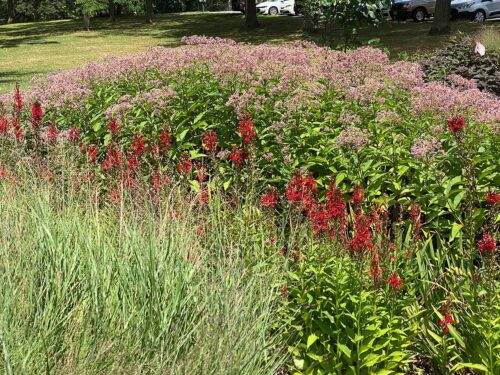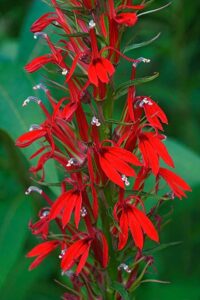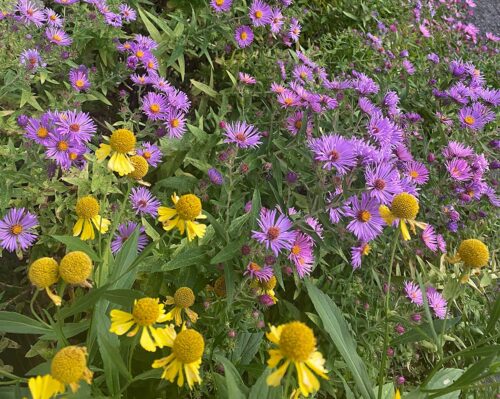Main Content
Utilizing native plants can help achieve an important goal of organic land care: limited use of offsite inputs to a landscape. Incorporating native plants into a home landscape can help increase biodiversity and habitat, as well as reduce the need for water and fertilizer applications. Native plants are those that occur historically in a certain ecosystem and have gotten there without help from humans. Native plants support local food webs including a wide variety of birds, butterflies, and other insects and often these species are dependent on certain native plants for survival.
New Jersey has over 2,000 native plants. We are lucky to live in an ecoregion with a diversity of native flowering plant species that, when properly selected, can provide color, habitat, and interest throughout the year. Whether you have a large yard or a few pots on a deck, there are opportunities to celebrate our native species that support pollinators and other wildlife.
Native plants can be used to create a natural-looking landscape, or they can easily be incorporated into a more formal or ornamental garden. Native plants are becoming more commonly available at home centers and nurseries but often still require work to find local sources of native plants.
Native plants with different bloom times provide pollen and nectar for pollinators throughout the seasons. When choosing native plants, remember “right plant, right place”. Choose plants that will thrive in your local site conditions. Is your site sunny or shady? Is your soil wet or dry, sandy or clay? No matter your site condition there are native plants that will fit into your landscape.
Ask your local garden center to carry natives plants.
Incoporating Native Plants
Here are some tips for incorporating native plants into your landscapes:
- If you use annuals for pots and garden borders, think about also incorporating native herbaceous perennials.
- In addition to annual fall mums, plant late flowering asters or goldenrods that flower from September into November. You’ll be supporting pollinators late into the season.
- If you look forward to crocuses coming up in the spring, consider planting early spring ephemerals like Virgina bluebells (Mertensia virginica), Dutchman’s breeches (Dicentra cucularilla), or wild geranium (Geranium maculatum).
- Use native plants as a groundcover, for example golden ragwort (Packera aurea), wild ginger (Asarum canadense), or Pennsylvania sedge (Carex pensylvanica).
- Use native shrubs as a hedge, for example blackhaw viburnum (Viburnum prunifolium).
- When selecting specimen trees, make sure they are native for example swamp white oak (Quercus bicolor) or American hornbeam (Carpinus caroliniana).
Resources
For more information about native plants visit these resources:
- Frequently Asked Questions About Native Plants
- New Jersey Native Plant Society
- Jersey Friendly Yards Plants Database
- National Wildlife Federation Keystone Plants by Ecoregion
- Supporting Bees in Your Garden and on Your Farm
- Native Plant Seed Propagation
- Invasive Plants and Native Alternatives for Landscapes


